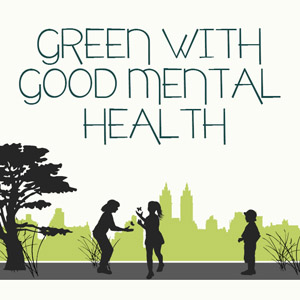Can Going Green Improve Your Mental Health?
Green space is good for your mind and spirit. It’s good for families, children, workers, and a myriad of other demographics. It’s simple, if you have the choice–stay outside, keep nature close, live a good life!
For Families?
Yes.
594 British families moved to urban areas with more green space
470 moved to urban areas with less
Statistical regressions eliminated influence of:
1.) Income
2.) Employment
3.) Education
4.) Personality traits
Group 1 showed markedly better scores on:
1.) Stress levels
2.) Ability to concentrate
3.) Make good decisions
4.) Confidence
5.) Overall happiness
Timeline:
Starting the first year of the move–>
Lasting for three years.
Nearby trees and private open space help birth outcomes.
10% more tree coverage reduces children born at low gestational age size
by 1.42 of 1000 births.
Possibly by enabling:
1.) Stress Reduction
2.) Improved social contact
3.) Increased physical activity.
For Children?
Yes.
4.4 million American kids have ADHD or ADD
Most play in one of five environments:
1.) Places with big trees and grass
2.) Indoors
3.) Lots of Open Grass
4.) Paved or constructed outdoor settings
5.) Other
ADHD kids suffered greatly reduced symptoms when they played in open grass
ADD kids suffered greatly reduced symptoms when they played in big trees and grass, or open grass.
Family income and gender had no effect on results.
Simply being in daily contact or within sight of nature:
1.) Soothes highly anxious children
2.) Increase cognitive function
For Workers?
Yes.
For workers with plants in the office, or a window view:
No difference among:
Age
Ethnicity
Salary
Education Levels
Those with plants or a view reported:
Higher overall life quality
Higher overall perceptions of job satisfaction
Higher overall perceptions of restoration theory
Why is this so?
Attention Restoration Theory
A.) Soft lines of the natural world
vs.
B.) Jarring computer screen angles
B requires directed attention.
Can take up to 15 minutes to force oneself into attentive “flow”
That can be broken in a moment (by say, a phone call).
–>
A involves effortless attention
Clouds, rustling leaves, spiders or snake (more fearful attention with the latter two)
Directed attention can be restored by changing what we focus on.
Too much B leaves us depleted.
A restores our attention span:
1.) Increasing focus
2.) Increasing cognitive abilities
Biophilia Hypothesis
Humans are naturally attracted to other living systems.
Humans and parks
Humans and mammals (particularly dogs, cats, horses)
Responses to natural systems leave us:
1.) Rested
2.) Positive
3.) Happier
Top North American Cities for Green Spaces
Boston:
2,600 acres of parks in the city
Boulder:
45,000 acres of greenway and wildlife with 146 miles of trails.
Chicago:
Notable artists, architects, and landscape architects have contributed to 570 parks.
8.5% of the total city acreage is devoted to parks.
Nashville:
12,000 acres of open space, including 108 Parks and 19 Greenways.
New Orleans:
Over 2,00 acres of public green space. Adorned with Spanish moss and historical and cultural significance.
Portland:
Over 10,000 acres of parks, gardens, and trails.
San Francisco:
Over 5,000 acres of parks. Or 18% of the city’s acreage.
Savannah:
Forsyth Park, the most well known park for the city is 30 acres amidst a vibrant historic district.
Vancouver:
3,900+ acres of total park land, or 6.97 acres per 1000 residents.
It’s simple. Move closer to green space. Let your children play outside. Bring plants and open windows in your office. It makes a massive difference to your mental health and overall happiness.
Citations:
- Smithsonian Mag, Moving to an area with more green space can improve your mental health for years
- USA Today< Best Urban Greeen Spaces in North America
- American Society for Horticultural Science, Greener office make happier employees
- Wikipedia, Attention Restoration Theory
- Wikipedia, Biophilia Hypothesis
- City of Boston, Parks
- Boulder Greenspace
- Wikipedia, Parks of Chicago
- Nashville Parks and Recreation
- New Orleans Parks and Parkways
- Wikipedia, Portland Parks and Recreation
- Visit Savannah, Forsyth Park
- Vancouver Open Space






